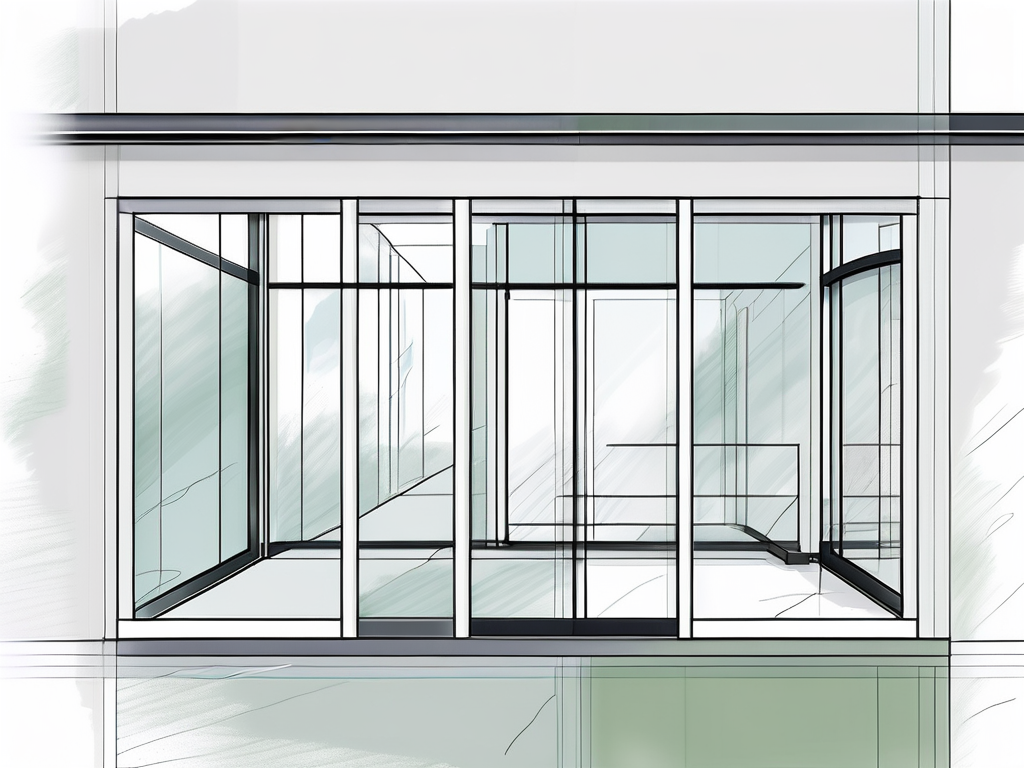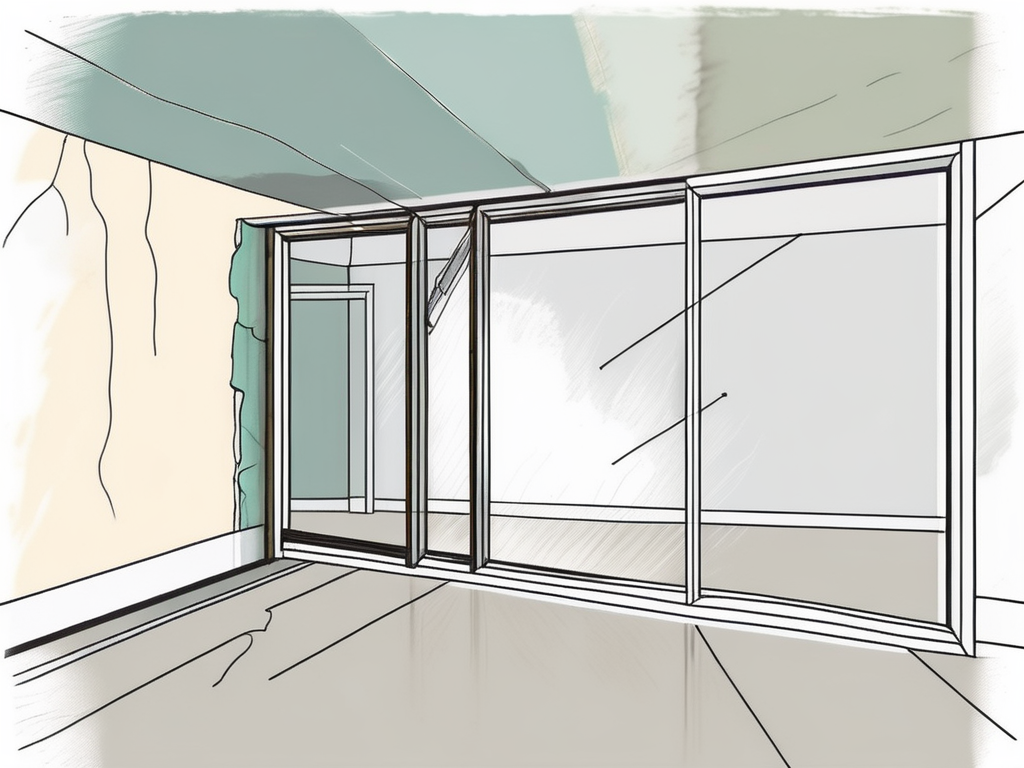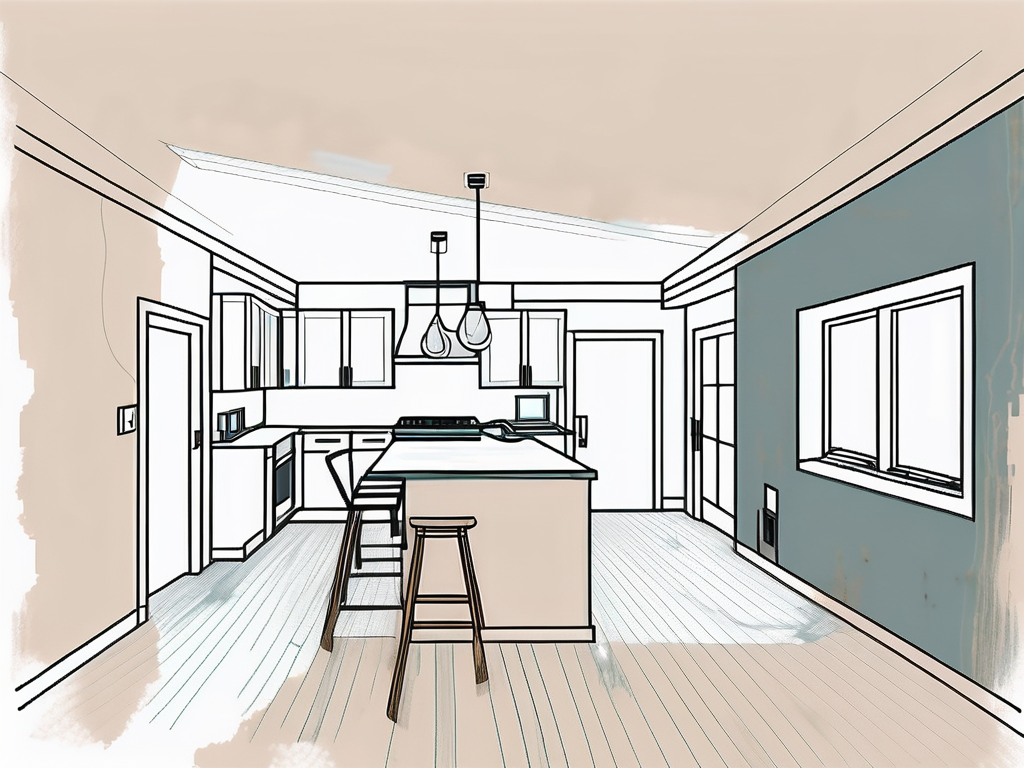Installing new glass windows and doors can greatly enhance the aesthetics and functionality of any home. However, when undertaking such a project, it is important to consider the repairs that may be required on various surfaces such as drywall, stucco, paint, electrical, and plumbing. In this article, we will delve into the installation process of new glass windows and doors and explore the necessary preparations and the role of professional installers. We will also discuss the specific repairs that may be needed for drywall, stucco, paint, and electrical systems.
Understanding the Installation Process of New Glass Windows and Doors
Before we delve into the repairs that may be required, it's important to have a good understanding of the installation process for new glass windows and doors. Proper installation is crucial to ensure that the windows and doors function properly and are energy-efficient.

There are several necessary preparations that need to be made before the installation can take place. Let's explore these preparations in more detail.
Necessary Preparations for Installation
Prior to installing new glass windows and doors, it is important to measure the openings accurately. This ensures that the windows and doors fit snugly and provide a proper seal. Any discrepancies in measurements can lead to air and water leaks, which can cause damage to the interior of your home.
Additionally, it is essential to inspect the existing frames for any signs of damage or rot. Damaged frames should be repaired or replaced before the new windows and doors are installed.
Furthermore, it is important to remove any obstacles or obstructions that might hinder the installation process. This includes clearing the immediate area of furniture, decorations, and any other items that may be in the way.
The Role of Professional Installers
While some homeowners may choose to install new glass windows and doors themselves, it is highly recommended to hire professional installers for this task. Professional installers have the expertise and experience to ensure that the installation is done correctly and efficiently.
Professional installers are familiar with the specific requirements of different window and door types and can provide valuable advice regarding the best options for your home. They also have access to the necessary tools and equipment to carry out the installation safely.
In addition, professional installers are knowledgeable about local building codes and regulations. This ensures that the installation is compliant with all necessary standards, giving you peace of mind that the work is being done correctly.
Drywall Repairs and Window/Door Installation
When installing new glass windows and doors, it is common to encounter drywall damage. The handling of large panels and the removal of existing windows and doors can cause dents, scratches, or even holes in the drywall. It is essential to address these issues before proceeding with the installation.

Identifying Drywall Damage
Before attempting any repairs, it is important to identify the extent of the drywall damage. Superficial scratches or dents can often be easily repaired, while larger holes may require more extensive work. Take the time to thoroughly inspect the affected areas and determine the appropriate course of action.
Techniques for Repairing Drywall
When it comes to repairing drywall, there are several techniques that can be employed, depending on the extent of the damage. For minor scratches or dents, simply applying spackle or joint compound and sanding the area smooth may be sufficient. However, for larger holes, additional steps may be required.
One common technique is to use a drywall patch. This involves cutting out the damaged portion of the drywall and replacing it with a new piece. The patch is then secured in place using joint compound and drywall tape. Once the repair is complete, the area can be sanded and painted to match the surrounding wall.
For more complex repairs, it may be necessary to seek the assistance of a professional drywall contractor. They have the expertise to handle extensive damage and ensure a seamless repair that blends seamlessly with the existing wall.
Stucco Repairs in the Context of Installation
Stucco is a popular exterior finish that adds both beauty and durability to a home. However, during the installation of new glass windows and doors, stucco may suffer damage due to the removal or manipulation of the surrounding materials. It is important to recognize and address any stucco damage before proceeding with the installation.
Recognizing Stucco Damage
Stucco damage can manifest in various ways, including cracks, chips, or even complete detachment from the underlying structure. These issues not only compromise the aesthetic appeal of your home but can also lead to water infiltration and further damage if left unaddressed.
Thoroughly inspect the stucco surface surrounding the windows and doors and take note of any visible signs of damage. Pay attention to hairline cracks, as these can widen over time and result in more significant problems.
Effective Stucco Repair Methods
Addressing stucco damage requires different repair methods depending on the severity and extent of the damage. Small cracks or chips can often be repaired using a stucco patching compound. This compound is applied to the damaged area and smoothed out to match the surrounding texture.
For larger or more extensive damage, it may be necessary to remove the affected stucco entirely and reapply a fresh layer. This ensures a seamless repair that matches the existing stucco surface.
It is worth noting that stucco repair can be a delicate process, as proper adhesion and texture matching are essential. In cases where the damage is significant or if you lack experience with stucco repairs, it is advisable to consult with a professional stucco contractor who can ensure a high-quality repair.
Paint Repairs and Installation
The installation of new glass windows and doors can also impact the surrounding paint. The removal or manipulation of hardware and frames can lead to chipped or damaged paint, necessitating repairs to restore the appearance of your home.
Assessing Paint Damage
Prior to undertaking any paint repairs, it is important to assess the extent of the damage. Small chips or scratches can typically be addressed with touch-up paint, while larger areas may require more extensive work.
Inspect the paint around the windows and doors for any signs of damage, including chips, cracks, or areas where the paint has peeled off completely. Take note of the affected areas to guide your repair efforts.
Best Practices for Paint Repairs
When it comes to paint repairs, there are several best practices to keep in mind. First and foremost, it is essential to properly prepare the surfaces before applying any new paint. This includes thoroughly cleaning the area, sanding any rough spots, and applying a primer if necessary.
For smaller chips or scratches, touch-up paint can be applied using a small brush or applicator. It is important to feather the edges of the paint to blend it seamlessly with the surrounding surface. Multiple thin coats may be needed to achieve the desired coverage.
For larger areas, it may be necessary to repaint the entire wall or section to ensure a consistent finish. In such cases, it is advisable to consult with a professional painter who can provide guidance on color matching and application techniques.
Electrical Considerations for New Installations
When installing new glass windows and doors, it is important to consider how the project may impact the electrical systems in your home. The addition or relocation of windows and doors can result in changes to the electrical wiring, requiring special attention to ensure safety and proper functioning.

Potential Electrical Issues
The installation of new windows and doors may require the relocation or addition of electrical outlets, switches, or light fixtures. This can involve running new wiring or altering existing circuits to accommodate the changes.
Before proceeding with any electrical work, it is crucial to consult with a licensed electrician. They can assess the electrical requirements of your project and provide guidance on any necessary changes or upgrades.
Safe Electrical Repair Strategies
Electrical repairs should always be handled by qualified professionals to ensure safety and compliance with local codes. When it comes to electrical work related to installing new glass windows and doors, here are some best practices to keep in mind:
- Always turn off the power to the affected circuit before making any electrical connections or modifications.
- Use properly rated electrical components and materials that are suitable for the specific application.
- Follow the manufacturer's instructions and recommended installation practices for any electrical devices or fixtures.
- If in doubt, consult with a licensed electrician to ensure that the work is done safely and correctly.
By adhering to these guidelines and consulting with professionals when necessary, you can ensure that the electrical work associated with installing new glass windows and doors is done safely and meets all necessary requirements.
Conclusion
When undertaking the installation of new glass windows and doors, it is important to consider the potential repairs that may be required for various surfaces. Properly addressing drywall, stucco, paint, and electrical issues ensures a seamless installation and helps maintain the integrity of your home.
Whether you opt to tackle these repairs yourself or seek the assistance of professionals, it is crucial to prioritize safety and quality. By taking the time to understand the installation process and following best practices, you can enjoy the benefits of new glass windows and doors while maintaining the structural and aesthetic integrity of your home.

